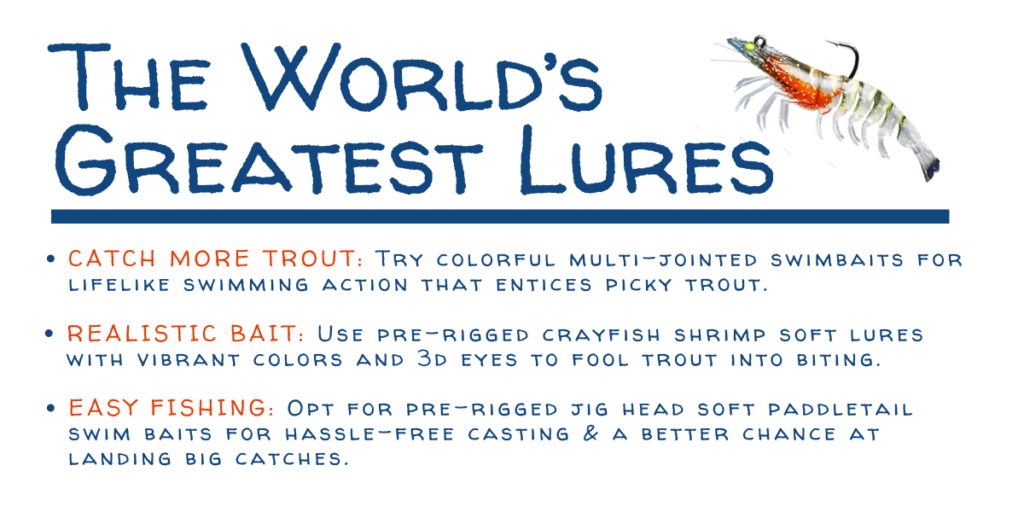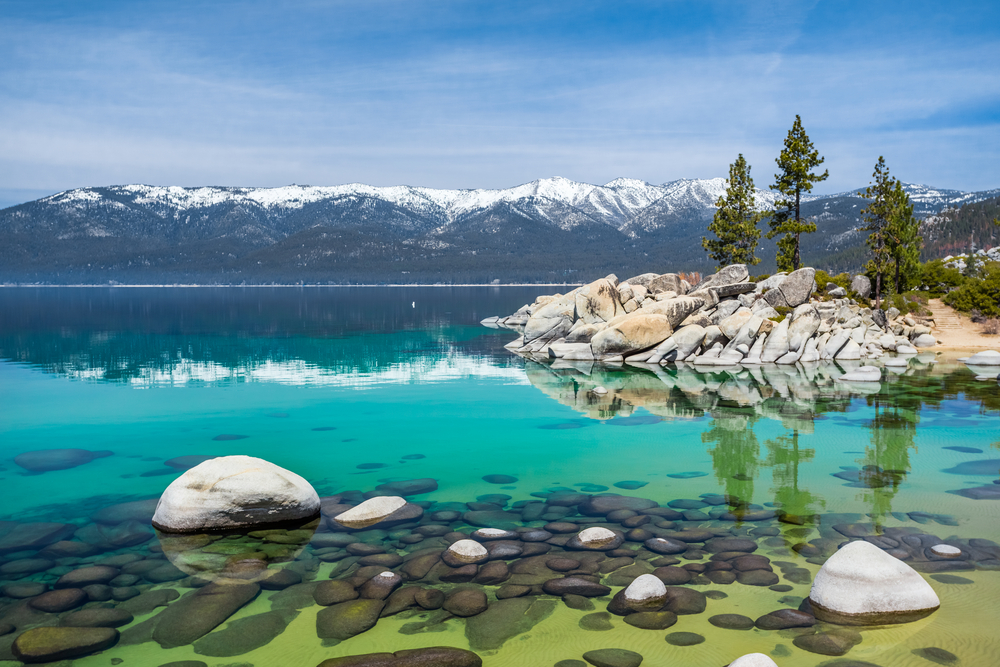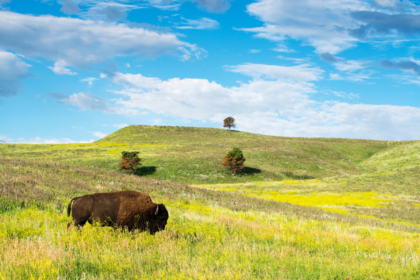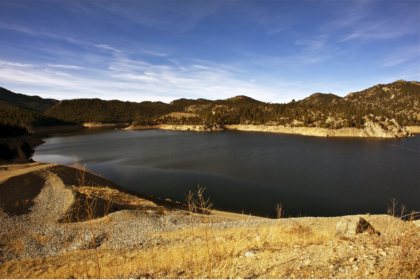
Lake Tahoe is one of the most popular places to catch trout and spend a relaxing day on the water. If you’re planning a trip, you’ll need to know the regulations before fishing in Lake Tahoe!
Fishing in Lake Tahoe requires anyone 16 years of age or older to have either a California or Nevada sport fishing license, while chumming and using outside sources of live bait is not allowed. Fishing begins an hour before sunrise and ends two hours after sunrise, while the seasons for species of fish, like trout, vary year-by-year.
In this article we’ll look at what licenses and regulations are required for Fishing at Lake Tahoe as well as the limitations in place, and an overview of the popular game trout in the area!
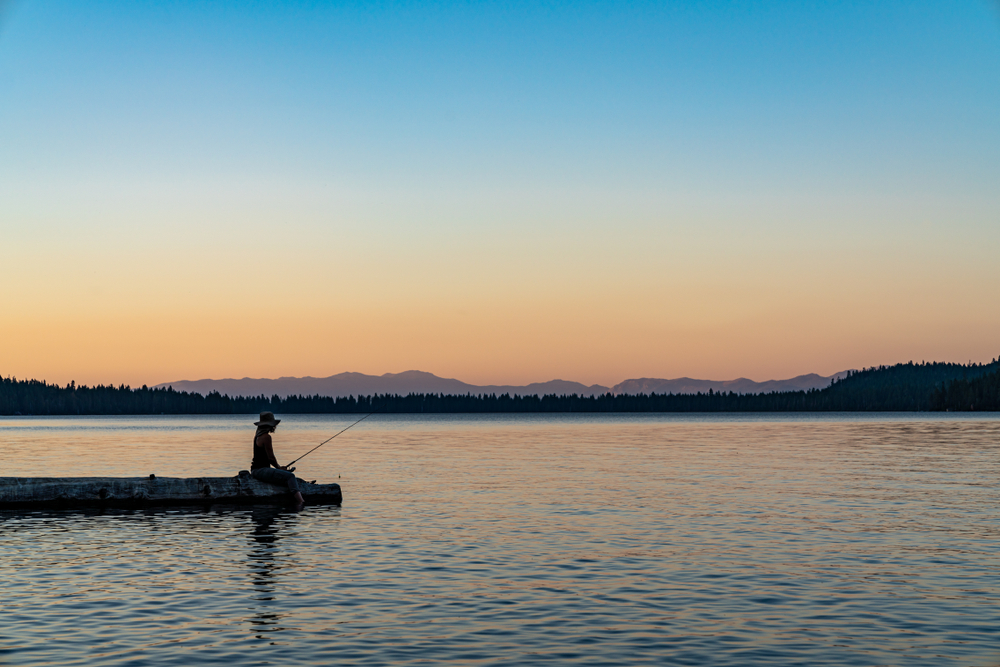
Licenses Needed to Fish at Lake Tahoe
If you’re going to catch anything in Lake Tahoe, you’ll need to have the proper permissions from the State. Otherwise, you run the risk of having to pay a fine, which could easily ruin a great trip on the water. Below, you’ll find the necessary requirements to be properly licensed for fishing at Lake Tahoe, as provided by the California Department of Fish and Game.
If you are 16 years of age or any older, you’ll have to have:
- A sport fishing license from the state of California
- A sport fishing license from the state of Nevada
- A sport fishing license for any nearby lake or stream that crosses into a different state.
Remember that most sport fishing licenses can be acquired at any retail location that sells fishing equipment, for a fee.
If you are from out of state and want a permanent California fishing license, it will cost more, but there are options like the 10-day license that are less expensive.
Fishing Limits at Lake Tahoe
The ecosystem of any lake requires a few fishing limitations to protect the wildlife and the health of the local environment. Lake Tahoe is no different, and has it’s own state-ordained rules for those coming to catch fish. Below are the current limitations:
- Fishing may not begin until an hour before sunrise and may not continue for longer than two hours after sunset.
- The maximum amount of trout that can be caught in a day is 5.
- The maximum amount of mackinaw that can be caught in a day is 2.
- Only fish taken from Lake Tahoe can be used or kept as bait while fishing on Lake Tahoe.
- Only the following fish can be used as live bait: Tui Chub, Lahontan Mountain Sucker, Lahontan Reside Shiner, Tahoe Sucker, Lahontan Speckled Dace, and Piute Sculpin.
- Chumming is not permitted in Lake Tahoe and can result in legal consequences.
Make sure you study each of these limitations carefully and commit them to your memory before gearing up to head out on Lake Tahoe!
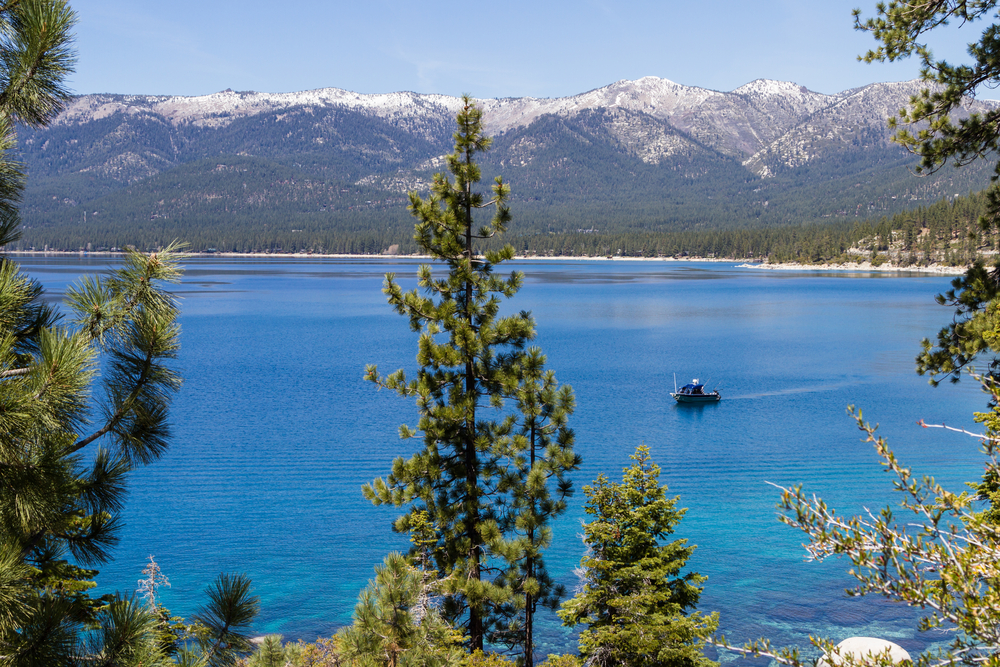
Lake Tahoe Fishing Fees
Lake Tahoe does not have fishing fees outside of the money that will need to be spent on sport fishing licenses. However, if you’re going to use a fishing charter, such as Tahoe Sport Fishing, you’ll find the pricing below:
| Public Fishing Charters Pricing: | $180 |
| Private Fishing Charters Pricing: | $1,260 |
Fishing Seasons
The fishing seasons in Tahoe vary depending on the type of fish and the year, and can usually be found in a copy of the fishing regulations. However, here are 2022’s fishing seasons:
| Species of Fish | Season For Fishing |
| White Perch | Open Entire Year |
| Bullhead | Open Entire Year |
| Sauger, Walleye, Hybrids | May 7 – March 5 |
| Catfish | Open Entire Year |
| Whitefish, Cisco | Open Entire Year |
| Smallmouth Bass | May 7 – June 17 |
| Lake Sturgeon | Closed All Year |
| Shovelnose Sturgeon | Closed All Year |
| Largemouth Bass | May 7 – June 17 |
| Ruffe | Open Entire Year |
| Muskellunge | May 28 – December 31 |
| Round Goby | Open Entire Year |
| Northern Pike | May 7 – March 5 |
| White, Rock, Yellow Bass | Open Entire Year |
| Panfish, Sunfish, Yellow Perch, Crappie, Bluegill, Pumpkinseed | Open Entire Year |
| Paddlefish | Closed All Year |

| Species of Trout | Season For Fishing |
| Mackinaw Trout | First Saturday of May – First Sunday of March the Following Year |
| Rainbow Trout | First Saturday of May – First Sunday of March the Following Year |
| Brook Trout | First Saturday of May – First Sunday of March the Following Year |
| Cutthroat Trout | First Saturday of May – First Sunday of March the Following Year |
These regulations are important to keep up to date on if you’re licensed and ready to have fun fishing on Lake Tahoe.
Types of Trout in Lake Tahoe
There are four main types of trout to be found and caught on Lake Tahoe. Sometimes their seasonal regulations vary depending on the year, but as you can see in the table above, all trout in 2022 have an open season beginning in May and continuing until the following March! Below you’ll find a list of the trout in Lake Tahoe worth fishing for:
- Rainbow Trout
- Mackinaw Trout
- Brook Trout
- Cutthroat Trout
Let’s take a closer look at each of these species in order to maximize your experience fishing on Lake Tahoe.
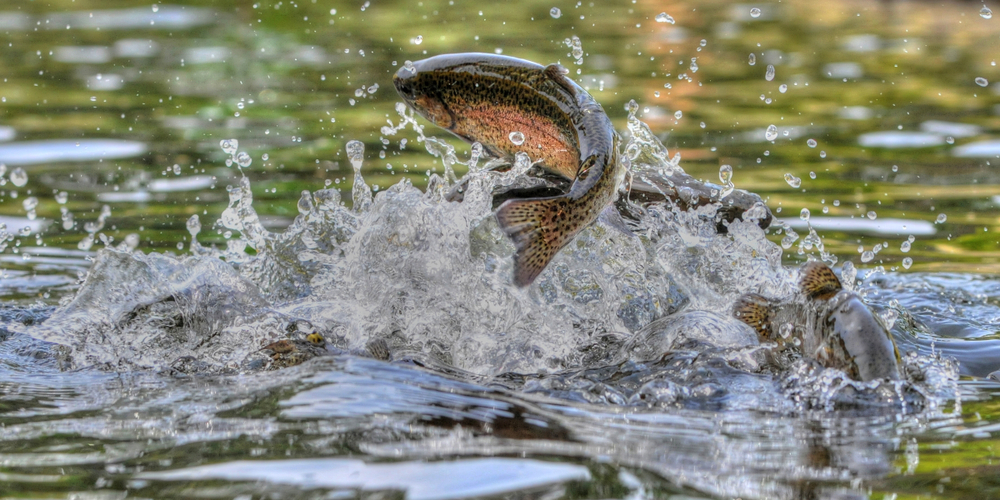
Rainbow Trout
Rainbow trout are named for their bright coloration, usually a base olive green with iridescent markings and spots. Besides the Mackinaw Trout, they are the most sought-after species in Tahoe. They can grow to be a maximum of 30 inches long and weigh 8 pounds; however, the biggest Rainbow trout on record have been 4 feet long and weighing upwards of 50 pounds!
A Rainbow trout prefers cool water, never remaining in water warmer than 68 degrees Fahrenheit if they can help it. They eat insects, small minnows, and worms, unless they can swallow smaller fish or fish eggs. Lake Tahoe’s Rainbow trout also tend to eat plankton.
The Rainbow trout is one of the healthiest kinds of fish a human being can eat, being rich in omega-3 fatty acids. Try fishing quietly, without spooking the fish, at a depth of at least 4 feet if not deeper. They are particularly active during the dawn and twilight hours, especially if it is raining.
The best lures for Rainbow trout are spinners like the Mepps Aglia or the Roostertail. They prefer live bait, so live Tahoe suckers or nightcrawlers might be your best bet for bait!
Mackinaw Trout
Mackinaw Trout usually come in dark shades like grey, green, silver, or brown with white stomachs and orange fins. They are generally around 15 pounds at most and don’t exceed 20 inches on average. Still, some of the largest recorded Mackinaw Trout have been 40 pounds and upwards of 30 inches!
Mackinaw Trout not only like colder waters, but they prefer to stay in the deepest, centermost area of most lakes. They are actually one of the only game fish species that enjoy deep, cool waters to such an extent. They can be fished for at a depth of 30 inches on average, though in the late spring it might be a good idea to drop your line even lower, especially on bright days.
Mackinaw Trout can be found during the dawn until midday, but in the winter, they are active all day long. They feed on smaller fish, crustaceans, and insects, as well as plankton. Some of the best bait for Mackinaw Trout include salmon eggs and minnows. Try lightweight spinners and large rods for catching these large fish!
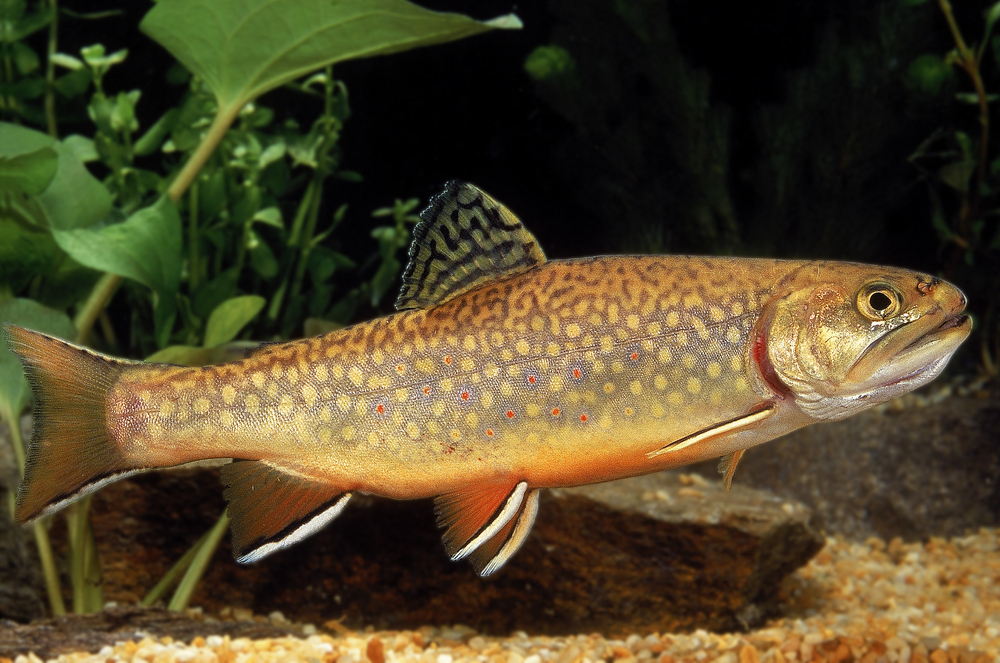
Brook Trout
Brook trout, despite their name, can be found in Lake Tahoe! are olive-green with yellow and darker worm-like markings and spots. You can distinguished them by their white bellies and lack of upper teeth. They reach a full size of ten inches on average, though the largest sizes have been bigger than twenty inches long and heavier than ten pounds!
These trout also prefer colder temperatures, having no tolerance for water that exceeds 72 degrees Fahrenheit. They prefer to swim near sources of cover. Their diet includes plankton, insects, smaller fish, worms, and even mollusks. They also have a liking for mice, when they can get them, and minnows.
Some of the best live bait to entice a Brook trout when fishing on Lake Tahoe are grasshoppers, caterpillars, maggots, earthworms, and even store-bought Power Baits. Try using a spinner lure for catching this fish.
Cutthroat Trout
You can recognize this species of trout by it’s tan-to-olive-green coloring, blunt face, and speckled body, including spots on the fins! Their silver bellies are also a distinct characteristic. They are also known as red-throats, or Harvest trout.
Cutthroat trout are close in appearance to rainbow trout, but they have small red markings around the mouth and tiny tongue-teeth near the throat. They are typically 9 inches in length, though some have reached 18 inches in size.
The best time to fish for this species on Lake Tahoe is during the spring. They typically eat leeches, smaller fish, and crustaceans near the deepest parts of the lakeshore. The most popular lure choices are spinners like Blue Fox and Mepps when trying to catch a Cutthroat.
Recommended Gear For Trout Fishing
If you want to catch more impressive game while fishing on Lake Tahoe, like trout, you’ll need the right gear! Check the list below for our recommendations:
- Rods – For catching trout, especially, spin rods and fly rods are the best options.
- Lines – Get a few spools of fly line that are at least 5-weight.
- Hooks – For trout fishing, bait hooks that are Size 8 are usually a good “catch-all” choice. However, a treble hook, with it’s three points and sturdy construction, is not a bad idea either!

In Summary
In summary, fishing on Lake Tahoe is free of fees unless you decide to use a fishing charter, and unless you count the cost of the required California or Nevada sport fishing license. Though many fish are available, mainly during the months of May through the following March, trout like the Rainbow, Cutthroat, and Brook variety are plentiful for anyone with the proper gear!
